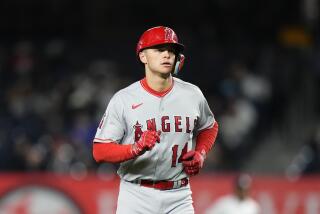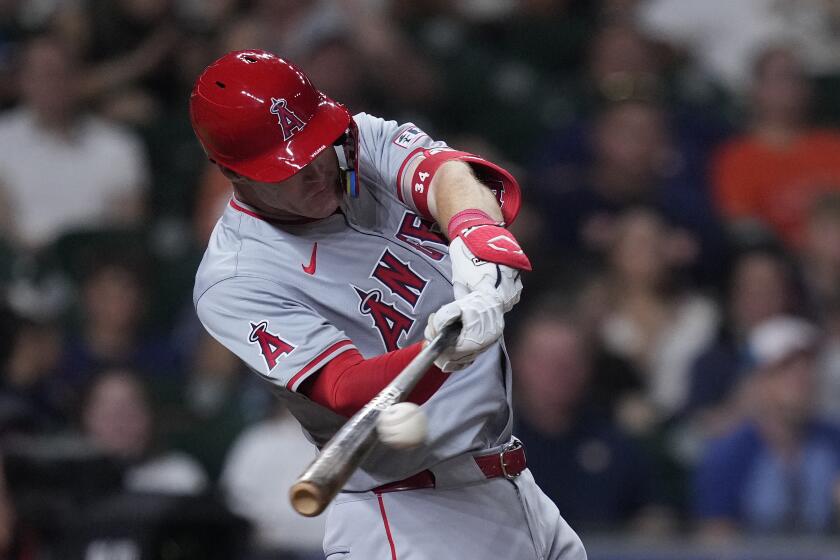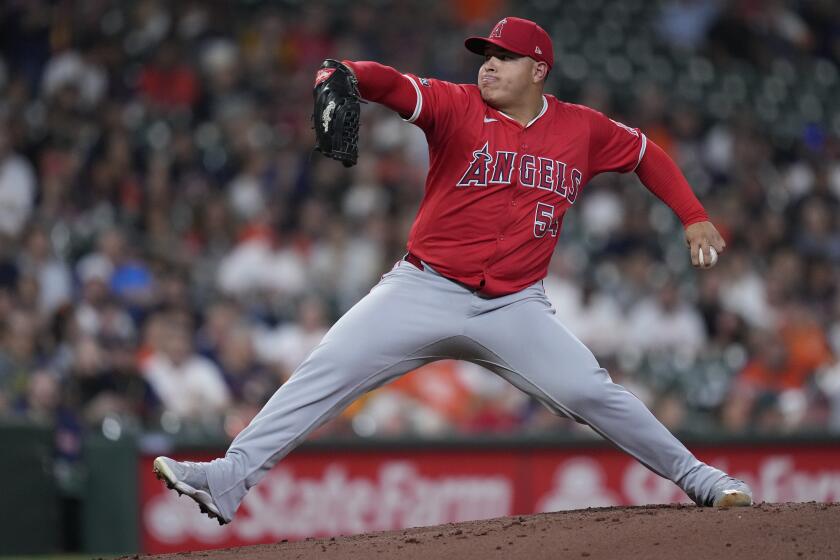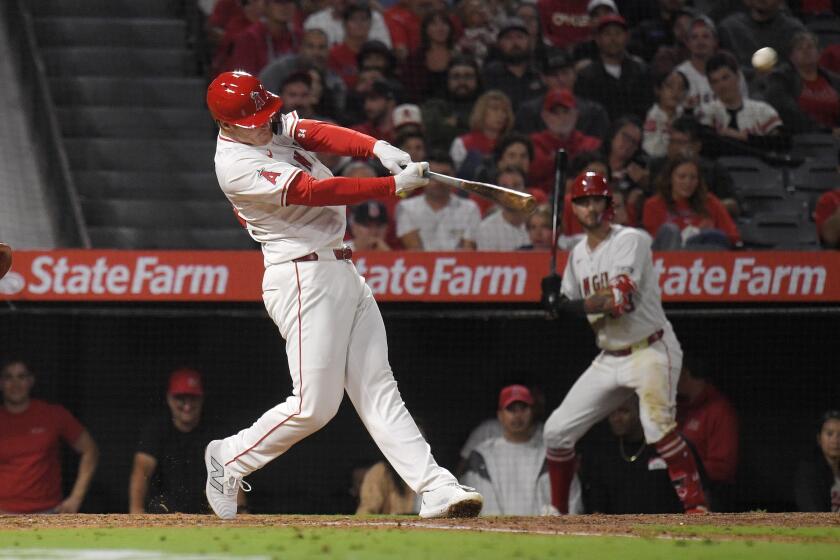New schedule has Scioscia shaking his head
BOSTON -- The division series, televised by ESPN and Fox in recent years, moved to TBS this season, but the schedule of games remains as perplexing as ever.
The Angels and Red Sox started Game 2 Friday night at 8:39 p.m. EDT in Fenway Park. Afterward, both teams were scheduled to fly all night, six hours across country, and arrive in Southern California between 5 a.m. and 6 a.m.
The Indians and Yankees started Game 2 at 5:07 p.m. EDT in Jacobs Field, and their flights from Cleveland to New York afterward took about 1 hour 15 minutes.
“Some teams in the same time zone are playing an earlier game, so I don’t know,” Scioscia said, shaking his head. “The quirkiness of the schedule, it’s not ideal, it doesn’t make a tremendous amount of sense, but it is what it is.”
Scioscia didn’t like the format that added an off day between Games 1 and 2 -- “It feels like we’ve been in Boston for a month,” he said -- but at least they’ll have an off day today.
In a span of three days in October 2005, the Angels played Game 4 of the division series in New York, Game 5 of the division series in Anaheim and Game 1 of the American League Championship Series in Chicago -- three games in three time zones in three days.
“If 2005 was any indication of what we had to do,” Scioscia said, “it’s pretty obvious that the freshness of the players on the field is of minimal or no concern to the people who are making the schedule.”
Left fielder Garret Anderson, whose conjunctivitis in his right eye has been aggravated by a sinus infection, was cleared for Game 2 after being examined by an ophthalmologist and undergoing a CT scan. He singled to right field in his first at-bat and hit a bloop double to right in his second at-bat.
“It’s looking puffier and puffier,” Scioscia said of Anderson’s eye, “but his vision is getting better and better.”
Anderson told Scioscia before Game 1 that he could see well enough to play, but after the game he said, “I can see -- it’s just not as crisp.”
That comment was a topic of discussion between Scioscia and Anderson before Game 2.
“We just talked to him about making sure he was OK, that I had heard that maybe it wasn’t, and he assured me he was fine to see,” Scioscia said. “I think his vision is fine, or he wouldn’t be playing. It’s not affecting anything he needs to do to play baseball.”
The commissioner’s office has received confirmation that Gary Matthews Jr. is not a target of a national investigation into Internet drug trafficking, a baseball official said Friday, and the Angels center fielder will be summoned to discuss an SI.com report that he ordered a shipment of human growth hormone in 2004.
The official, speaking on condition of anonymity, said a meeting between Matthews and representatives of the commissioner’s office has not been scheduled. A meeting would be possible but unlikely during the busy playoff season.
Baseball did not ban HGH until 2005, so it is unlikely arbitrators would sustain a suspension should Commissioner Bud Selig decide to impose one.
Rob Manfred, baseball’s executive vice president for labor relations, met last week with prosecutors from the Albany (N.Y.) County district attorney’s office, the agency leading an investigation to which Matthews, Rick Ankiel, Troy Glaus, Jay Gibbons and Scott Schoeneweis have been linked in published reports.
Albany officials have said they would prosecute pharmacists and doctors improperly supplying steroids and human growth hormone, not any athletes or other customers.
The man who for 30 years has tended to Angels injuries needed medical attention himself Friday night. Athletic trainer Rick Smith, sitting in the front corner of bench in the third base dugout, was drilled in the right rib cage by Casey Kotchman’s foul line drive in the top of the fifth inning.
Scioscia and batting instructor Mickey Hatcher barely had time to get out of the way. But Smith, screened on the play, was unable to elude the ball and was taken for precautionary X-rays.
--
Times staff writer Bill Shaikin contributed to this report.
More to Read
Go beyond the scoreboard
Get the latest on L.A.'s teams in the daily Sports Report newsletter.
You may occasionally receive promotional content from the Los Angeles Times.






